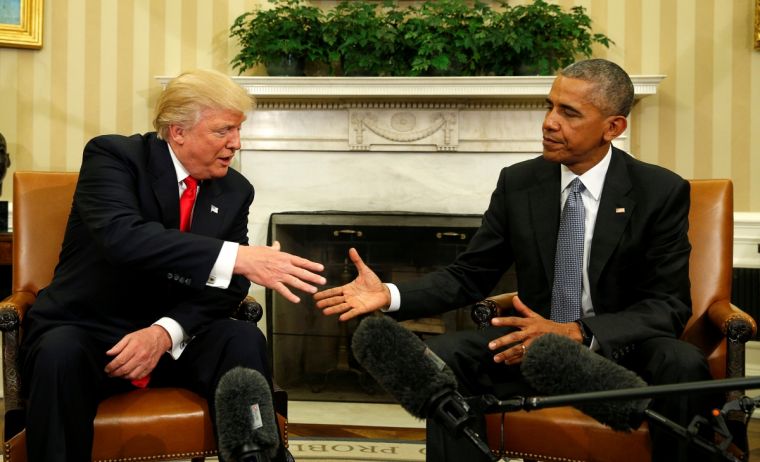Trump's Refugee Ban vs Obama's: What Is The Difference?
The backlash to the backlash has, predictably, begun.
Trump supporters and those who simply enjoy being contrarian have sought to legitimise the ban on refugees enacted on Friday by claiming Barack Obama did something similar in 2011.
"My policy is similar to what President Obama did in 2011 when he banned visas for refugees from Iraq for six months," Trump wrote in a statement on Sunday.
"The seven countries named in the Executive Order are the same countries previously identified by the Obama administration as sources of terror. To be clear, this is not a Muslim ban, as the media is falsely reporting."
Here are three reasons the comparison is misleading and wrong.

1. Obama never banned refugees
In 2011 the White House conducted a review of the vetting procedures of people from one country, Iraq, and only of those who applied for Special Immigrant Visas (SIVs), which was introduced to help Iraqis and Afghans who supported US troops during those two wars.
Contrary to Trump's statement Obama never "banned visas for refugees from Iraq". For one thing refugees don't travel on visas. But neither was there ever a ban on refugees from Iraq. Obama's order only delayed a limited number of applications while extra vetting was taking place. There was not a single month where no Iraqi refugees were allowed in – it was a delay for security not a ban.
On the other hand Trump's executive order is a total ban that applies to seven countries with a total population of more than 130 million targeting immigrants and refugees of every category, including tourists and business travellers.
2. Obama's action was an orderly process grounded in specific threat
The Obama 2011 review of vetting that prompted the six month delay was done in response to specific threats, namely the arrest of two Iraqi refugees in Kentucky on terrorism charges.
These remain the only terrorist-linked arrests out of around 130,000 Iraqi refugees in the US.
The review was then conducted through meetings with intelligence officials as well as the State, Homeland Security and Justice Departments.
By contrast Trump's administration has provided no evidence or even asserted that intelligence has led to this move.
The executive order was drafted by political aides and then given to agencies to implement with little or no consultation. His secretary of Homeland Security only found out by watching TV news reports, according to the New York Times.
3. Obama's list of seven countries was taken out of context.
Trump claimed the list of seven Muslim majority countries he banned all entry into the US from for 90 days was based on a list by Obama's administration.
This is highly misleading.
After the San Bernadino terrorist attack in 2015 Obama signed an amendment to the Visa Waiver Programme that allows citizens of certain countries to travel to the US without obtaining vias and allows US citizens similar privileges in return.
That amendment removed from the VWP dual nationalities who were citizens of four countries – Iraq, Iran, Sudan and Syria. Later three more countries – Libya, Somalia and Yemen – were added.
But at no point did it bar people from those countries from coming to the US. It just required a very small number of extra people to apply for visas before they were allowed entry.
All in all Trump's aim to justify his actions through referring to his predecessor's is highly problematic.











